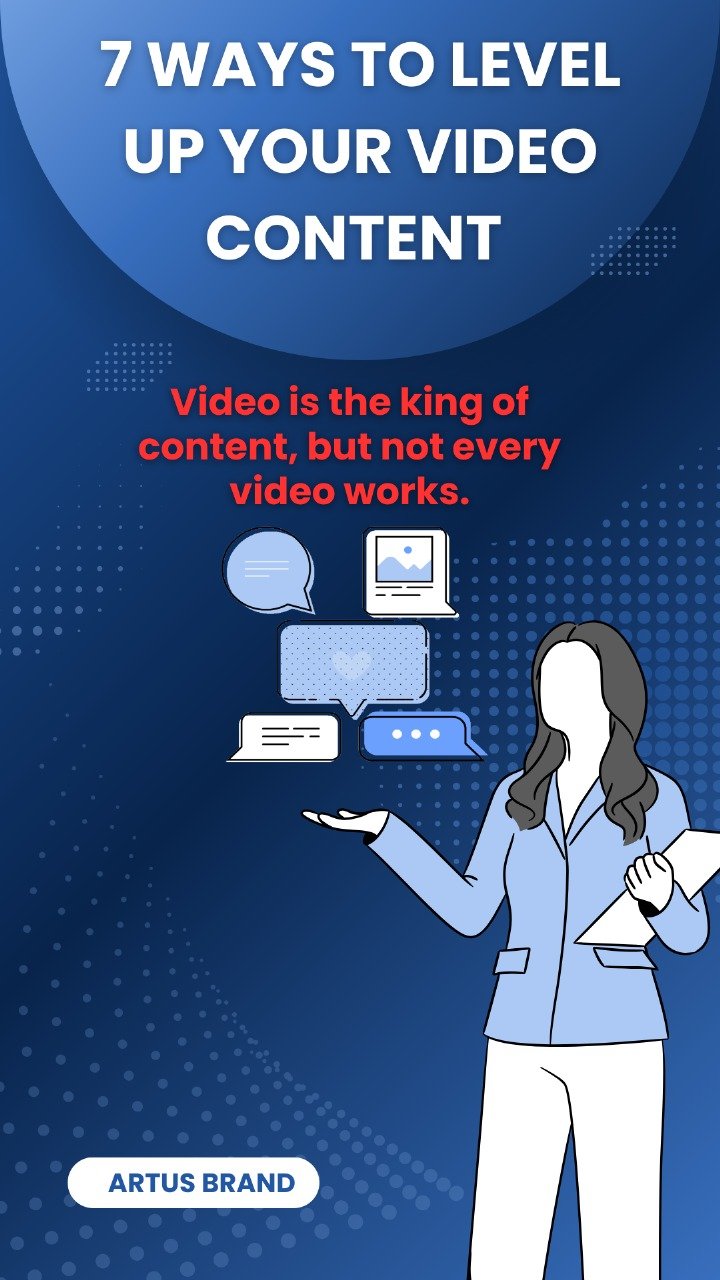Video Content is no longer just a marketing option; it’s a necessity. Whether you are a small business owner, a digital marketing agency, or a global brand, videos have become one of the most effective ways to connect with your audience. Research shows that viewers retain 95% of a message when it is delivered through video, compared to just 10% through text. This explains why platforms like YouTube, Instagram Reels, and TikTok are booming with user engagement.
But here’s the catch: not all videos work. Millions of videos are uploaded daily, yet only a small fraction captures attention and drives meaningful engagement. The difference lies in how the video is planned, produced, and delivered. Simply creating a video is not enough anymore; you need videos that are engaging, authentic, and value-driven.
In this blog, let’s break down 7 proven ways to create engaging video content that works for businesses and brands.
1,Start with a First Impression Line
The beginning of your video is the most critical moment. Studies show that viewers decide within the first 3 to 5 seconds whether they will keep watching or scroll away. That means your opening has to be magnetic, not generic.
Think of your attention grabber as the “movie trailer” for your content. If the trailer is boring, no one will watch the full film. The same logic applies to your videos.
👉 Instead of starting with a bland introduction like “Hi, welcome to my channel”, try using one of these attention-grabbing styles:
A surprising statistic: “Did you know 90% of online shoppers say videos help them decide what to buy?”
A question: “Want to know the secret to doubling your sales with one simple strategy?”
A bold statement: “Your marketing strategy is incomplete without video, and here’s why.”
A relatable scenario: “Imagine losing customers every day without even realizing it. That’s what happens when you ignore video content.”
A teaser of the result: “By the end of this video, you’ll know how to create videos that people can’t stop watching.”
Why First Impression Lines Work
People scroll fast. On platforms like TikTok and Instagram Reels, you have less than 2 seconds to capture attention. A powerful opener acts like a mental stop sign, forcing viewers to pause and stay engaged.
Pro Tip: Use curiosity-driven openers. If your introduction promises value, surprise, or entertainment, people will stay longer. Try scripting 3–4 variations for every video, then test which one resonates most with your audience.
2,Know Your Audience
Every successful piece of video content is built with the audience in mind. Ask yourself:
Who am I making this video for?
What problems do they face?
What format do they prefer: tutorials, testimonials, or entertainment?
For example, if your target is small business owners, create videos that explain marketing strategies in simple terms. If your audience is Gen Z, short, fast-paced, and entertaining content works better.
Case in Point: Nike’s videos are highly motivational because their audience craves inspiration, while HubSpot creates detailed tutorials because their audience values education.
Understanding your audience ensures your video feels personalized and relevant, making it more engaging.
3,Tell a Story
Humans are wired to connect with stories. Facts may inform, but stories inspire and stick. A video with a storytelling arc (problem, solution, and result) is far more engaging than one that simply lists features.
👉 Example: Instead of saying “Our product saves time”, create a short story:
Show a frustrated person wasting time with an old method.
Introduce your product as the solution.
End with the person happy and stress-free.
Stories make your content relatable and emotionally powerful. They transform a brand into something people can connect with.
Pro Tip: Use real customer testimonials or behind-the-scenes stories to add authenticity.
4,Keep It Short and Focused
Attention spans are shrinking. A recent study suggests that the average human attention span is just 8 seconds, shorter than that of a goldfish. That means your videos should deliver value quickly.
For social media, videos between 60 to 90 seconds perform best. For platforms like YouTube, slightly longer content works if it is educational or storytelling-based.
👉 Instead of cramming too much information into one video, break it into a series. For example:
Video 1: “5 Tips to Boost Instagram Reach”
Video 2: “How to Use Reels for More Engagement”
Video 3: “Best Hashtags for Instagram Growth”
This way, you keep content digestible and encourage viewers to come back for more.
5,Use Captions and Graphics
One key reason people scroll past videos is sound. In fact, 85% of Facebook videos are watched without sound. Adding captions ensures your message still reaches viewers even if the sound is off.
Beyond captions, graphics, infographics, and animated text make your content visually appealing and easier to understand. For example:
Use bold keywords on-screen while speaking.
Add arrows, highlights, and animations to emphasize points.
Insert relevant emojis or icons for a more casual, social-media-friendly touch.
Pro Tip: Keep captions readable. Use large fonts, contrasting colors, and minimal text per screen.
6,Add a Strong Call-to-Action (CTA)
Your video should guide viewers on what to do next. A CTA can be as simple as:
“Like and subscribe for more tips.”
“Click the link below to learn more.”
“Share this video with someone who needs it.”
Without a CTA, viewers may enjoy your video but won’t take action. CTAs also help you measure success. More clicks, sign-ups, or sales mean your content is working.
👉 Example: At the end of a product demo video, invite users with:
“Try it free for 7 days. Click the link in the description.”
This moves viewers from passive watching to active engagement.
7,Optimize for Each Platform
A one-size-fits-all approach does not work in video marketing. Each platform has its own audience behavior, format, and style:
YouTube: Long-form videos (5–15 minutes), storytelling, educational content.
Instagram Reels/TikTok: Short, snappy, vertical videos with trending audio.
LinkedIn: Professional, value-driven videos like case studies or insights.
Facebook: Engaging short videos with captions for mobile viewers.
👉 Example: A digital marketing agency can post a full webinar replay on YouTube, 60-second highlights on Instagram, and a professional case study snippet on LinkedIn.
By adapting your video content for each platform, you maximize engagement without repurposing blindly.
Additional Tips for Engaging Video Content
Consistency Matters: Posting one video a month will not work. Aim for at least 1–2 videos per week to stay visible.
Thumbnails Count: A catchy thumbnail can dramatically boost your video click-through rate.
Analytics Are Gold: Track watch time, drop-off points, and engagement rates. Use this data to refine your future videos.
Emotion Wins: Videos that spark laughter, curiosity, or even shock tend to be shared more.
✅ Final Thoughts
Engaging video content is more than just flashy visuals. It is about understanding your audience, delivering value, and building trust. When done right, videos can educate, inspire, and drive action.
By applying these 7 proven strategies, from starting with a strong hook to optimizing for each platform, your videos will not just get views; they will generate results.
Remember: people don’t buy products, they buy stories, experiences, and emotions. Use your video content to create that connection, and your brand will stand out in the crowded digital world.
Share:


